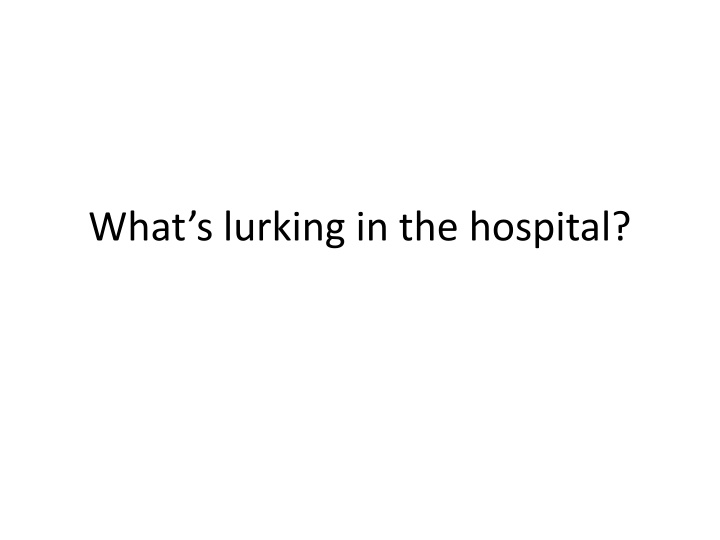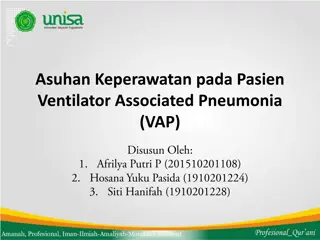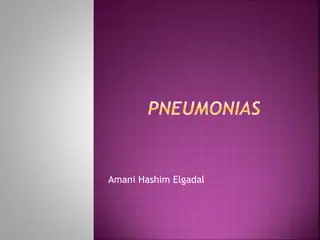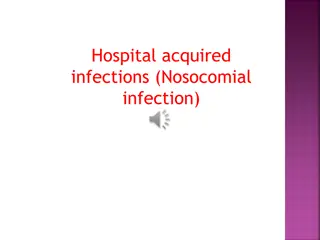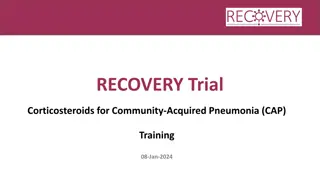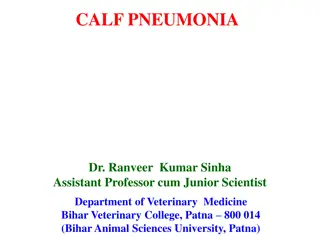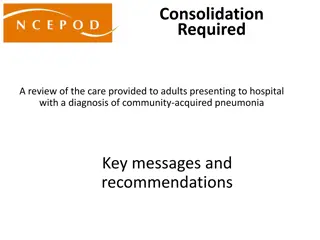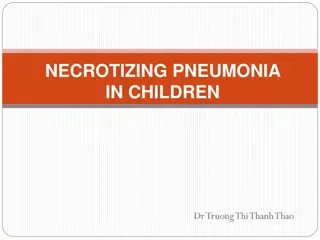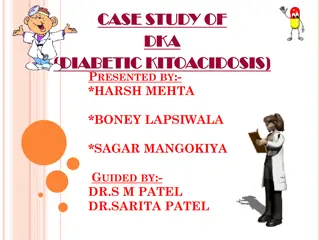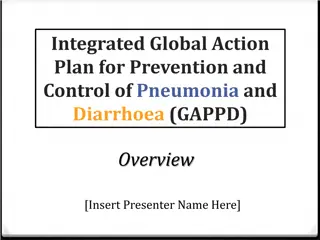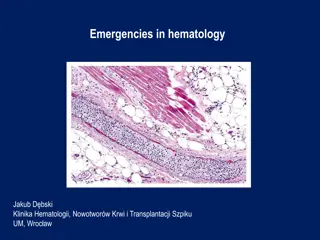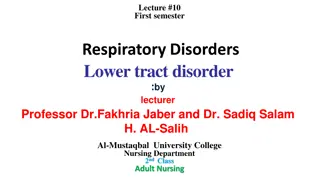Patient Case Study: 2-Year-Old with Nosocomial Pneumonia
A 2-year-old female presents with seizures and fever, diagnosed with Enterobacter cloacae bacteremia. Hospitalized for respiratory failure, requiring Extracorporeal Membrane Oxygenation (ECMO). Chest X-ray shows pleural effusion and lung collapse. Common causes of nosocomial pneumonia include bacterial pathogens like Staphylococcus aureus, Pseudomonas aeruginosa, and more. Laboratory results indicate Gram-negative coccobacilli. Learn about processing a bronchoscopy specimen for bacterial pathogens.
Download Presentation

Please find below an Image/Link to download the presentation.
The content on the website is provided AS IS for your information and personal use only. It may not be sold, licensed, or shared on other websites without obtaining consent from the author.If you encounter any issues during the download, it is possible that the publisher has removed the file from their server.
You are allowed to download the files provided on this website for personal or commercial use, subject to the condition that they are used lawfully. All files are the property of their respective owners.
The content on the website is provided AS IS for your information and personal use only. It may not be sold, licensed, or shared on other websites without obtaining consent from the author.
E N D
Presentation Transcript
Patient History A 2-year old female presents to the Emergency Department with seizures with the onset of fever The patient was diagnosed with Enterobacter cloacae bacteremia and treated with meropenem Due to a second aspiration event, the patient was put on a ventilator, but two days later her respiratory condition worsened She was transferred to the Primary Children s Hospital due to respiratory failure requiring treatment with Extracorporeal Membrane Oxygenation (ECMO) use of an artificial lung (membrane) located outside the body that puts oxygen into the blood and then carries this blood to the body tissues
Patient History (contd) Chest X-ray showed Increasing right pleural effusion Increasing opacity at the right lung base with complete opacification of the left lung and right upper lobe Left lung collapse A bronchoalveolar lavage (BAL) sample was collected and sent to the lab for culture
Common Causes of Nosocomial Pneumonia Gram-positive cocci Staphylococcus aureus Streptococcus pneumoniae Gram-negative rods Pseudomonas aeruginosa Acinetobacter baumanii Klebsiella pneumoniae Escherichia coli Serratia marcescens Enterobacter spp Haemophilus influenzae Stenotrophomonas maltophilia
Processing a Bronchoscopy Specimen for Bacterial Pathogens Collection of a the specimen through a bronchoscope Gram Stain of the specimen Specimen is plated on various media and the plates are observed for growth http://www.bronchoscopy.com/2013/06/about-bronchoscopy.html
Laboratory Results The gram stain of the BAL reveals 2+ Gram-negative coccobacilli and polymorphonuclear leukocytes On sheep blood agar: colonies were non-pigmented, translucent, and smooth On MacConkey agar: Colonies with a pinkish tint were observed but were non-lactose fermenting The organism was catalase positive and oxidase negative Gram-negative coccobacilli on gram strain Non-lactose fermenting colonies on MacConkey agar with a pink tint
Diagnosis Organism identified as Acinetobacter baumanii by the Vitek2 automated ID/AST system Susceptibility testing showed multi-drug resistance to fluroquinolones, aminoglycosides, cephalosporins, and intermediate susceptibility to carbapenems
Multi-Drug Resistant A. baumanii Gram-negative pleomorphic bacilli Non-fermenter, aerobic, found in natural environment Emerged as a pathogen frequently in lower respiratory tract in critically ill patients Accounts for 80% of reported infections Recognized worldwide as a nosocomial infection difficult to control, rapid antibiotic resistance, and ability to survive on inanimate objects Ventilator associated pneumonia Rapid development of resistance to aminoglycosides, fluroquinolones and carbapenems
Factors leading to transmission of multidrug- resistant (MDR) Acinetobacter species Colonized patient Contaminated medical equipment-ventilators, catheters Hands of hospital staff Host factors- surgery, trauma, prolonged hospital stay Most frequent manifestation is ventilator- associated pneumonia and blood stream infections
Patients Treatment and Outcome The patient was started on polymyxin B and meropenem in combination Dose adjustment and appropriate monitoring is important as polymyxin B is nephrotoxic Patient s chest X-ray showed improved aerations and patient was extubated Patient is on contact precautions for 5 years
Salika Shakir, Ph.D. Dr. Shakir is second year CPEP fellow at the University of Utah/ARUP Laboratories. Dr. Shakir completed her Ph.D. in Microbiology and Immunology at the University of Oklahoma followed by a post- doctoral fellowship in Pediatric Infectious Diseases. Her research interests include microbial genetics and antimicrobial susceptibility.
